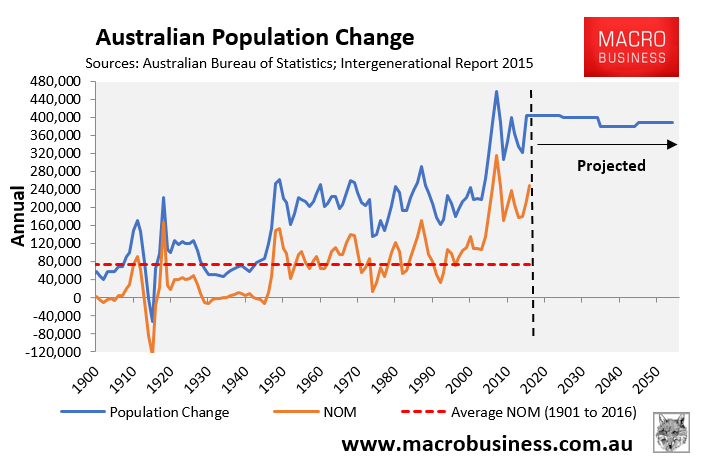It’s been amazing watching Scott Morrison’s speedy transformation from mass immigration ‘Big Australia’ defender to a sceptic on the verge of slashing the permanent migrant intake.
As recently as four months ago, Scott Morrison lambasted Tony Abbott’s push to cut the migrant intake to 110,000, warning it risked Australia’s future economic prosperity and would “cut off your nose to spite your face”. Morrison had also frequently claimed that cutting immigration would cost the federal budget billions in foregone revenue, completely ignoring the horrendous costs incurred by the states.
Then Scott Morrison pivoted to lying about the migrant intake, claiming that it was temporary migrants causing the population pressures, not the permanent migrant intake – an argument that was thoroughly debunked by MB again, and again and again.
Next came Scott Morrison’s ‘migrants to the bush’ smokescreen – a policy that was comprehensively debunked by Morrison himself when the former Gillard Labor Government proposed a similar policy in 2010-11, along with numerous other commentators.
Yesterday, we witnessed another leg in Scott Morrison’s capitulation over immigration, spruiking plans to let the states determine Australia’s migrant intake by submitting to the federal government their annual migration needs:
Because the states plan roads, hospitals and schools, they need to say where they want population growth.
“This is a blinding piece of common sense, which is: how about states who plan for population growth and the Commonwealth government who sets the migration levels, actually bring this together?” Mr Morrison told Sky News on Monday…
Instead, the prime minister wants to see states work closely with Canberra on where migrants should go, and where expansion should happen.
“They are in the best position to actually make a judgment about what the carrying capacity is in their state and territory,” he said.
“We’ll set what the cap is, we’ll let it be demand-driven, but it has to be based on what the carrying capacity is at state and territory level.”
Mr Morrison said the push to get migrants out to regional areas could be done with conditions on non-permanent visas.
“If you want permanent residency in this country and you’re on a non-permanent visa, and you haven’t been compliant with the terms of your non-permanent visa, you don’t get a permanent residency visa and you go home,” he said.
MB always said that the immigration debate would be won in Sydney, given this is where the pressures are most acute and where the political backlash has been strongest.
Clearly, Scott Morrison’s latest plan is a direct response to the NSW State Government and Opposition’s call for immigration into Sydney to be slashed.
Some MB readers have already dismissed Scott Morrison’s latest plan as all talk and another policy smokescreen. However, I believe it runs deeper than this. The Coalition can no longer deny that mass immigration has turned toxic in the crush-loaded big cities, and needs a narrative that allows it to cut immigration without looking contradictory, desperate and poll driven.
By letting the states ‘bid down’ the migrant intake, Scott Morrison has that narrative, which is an easy sell to the public and difficult for Labor to attack. It would also make it difficult for Labor to justify raising the migrant intake back up in the future.
Letting the states effectively set the immigration cap via the bottom-up is also a profound policy improvement over the current top-down approach. It would help eliminate the vertical fiscal imbalance dogging immigration policy, whereby the federal government receives the lion’s share of the benefits from mass immigration via increased personal and company tax receipts, whereas the states are left carrying the economic and social infrastructure costs.
While the devil is always in the detail, fully implemented this policy would very likely see Australia’s overall migrant intake substantially reduced with far less permanent migrants flowing to NSW (Sydney) and VIC (Melbourne), only partly offset by more going to other jurisdictions.
For mine, this latest announcement is the strongest indication we have seen that the Coalition will cut immigration in the lead-up to the election.
While we are unsure if Labor will back the move, it does suggest a paradigm shift may be finally taking place in the immigration debate.
A meaningful reduction in Australia’s immigration intake is looking increasingly likely:


